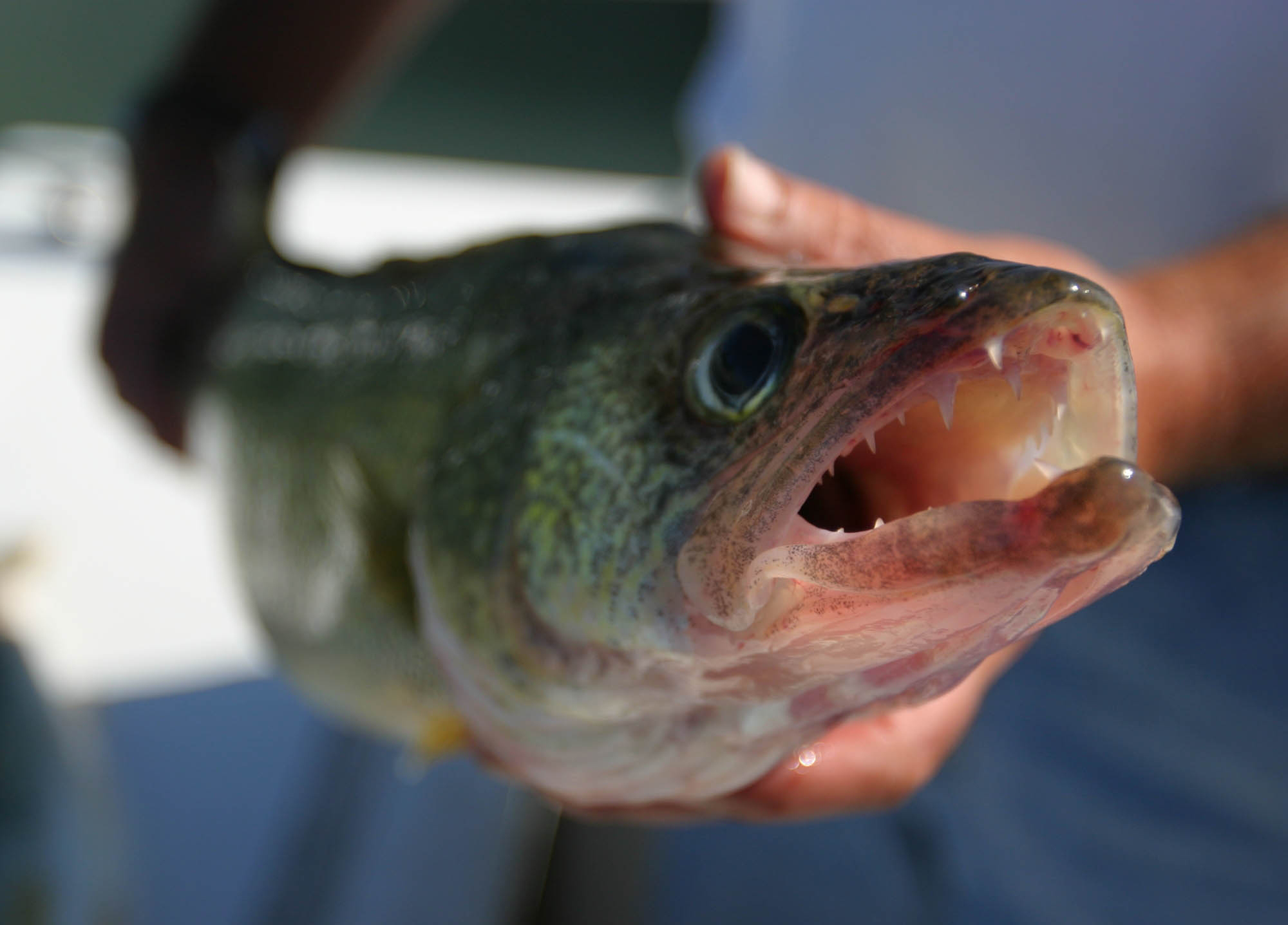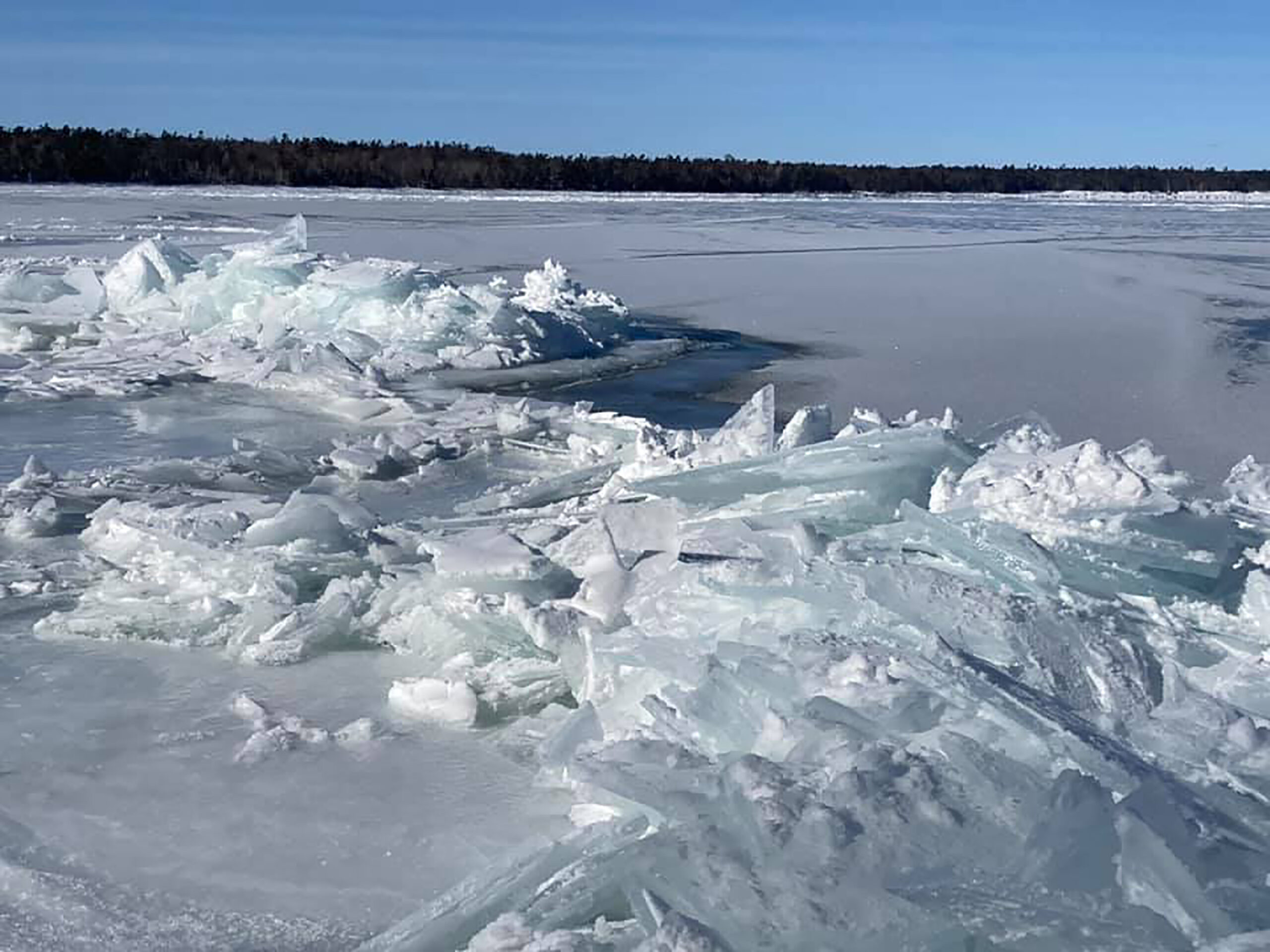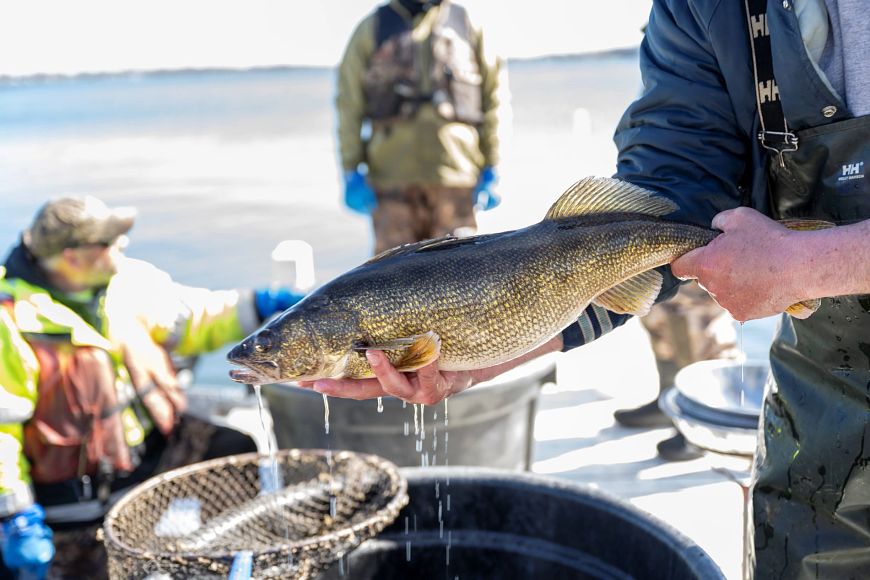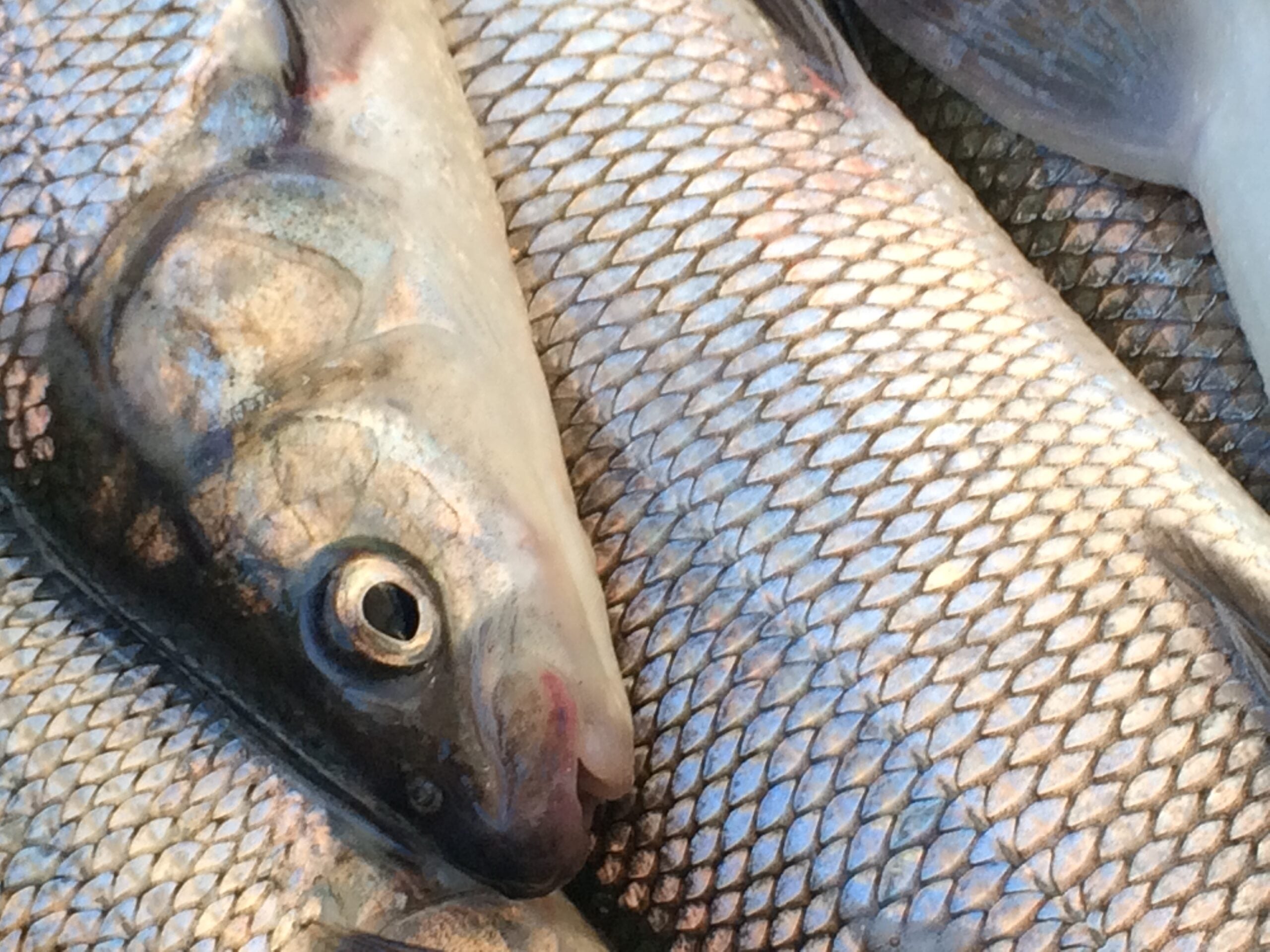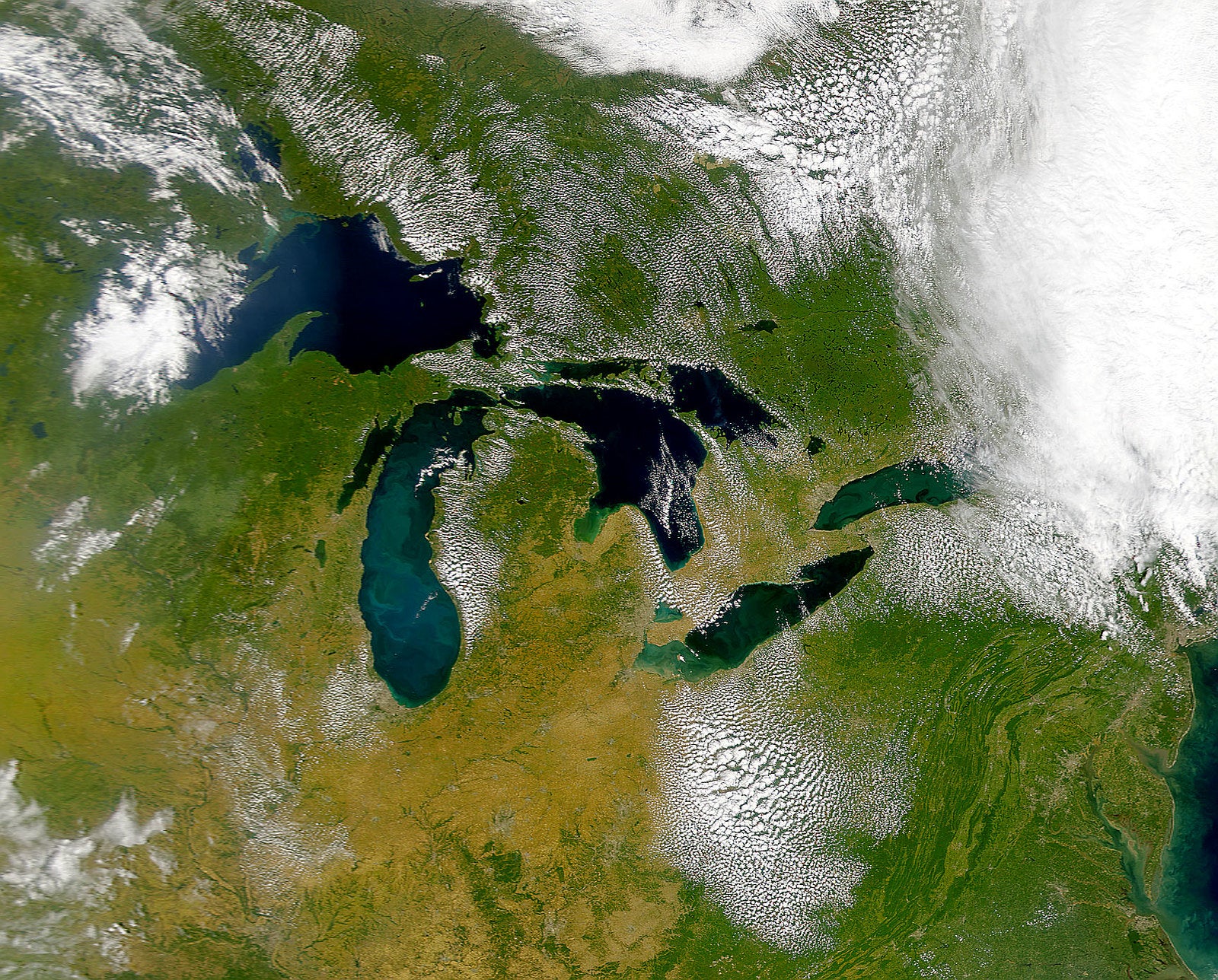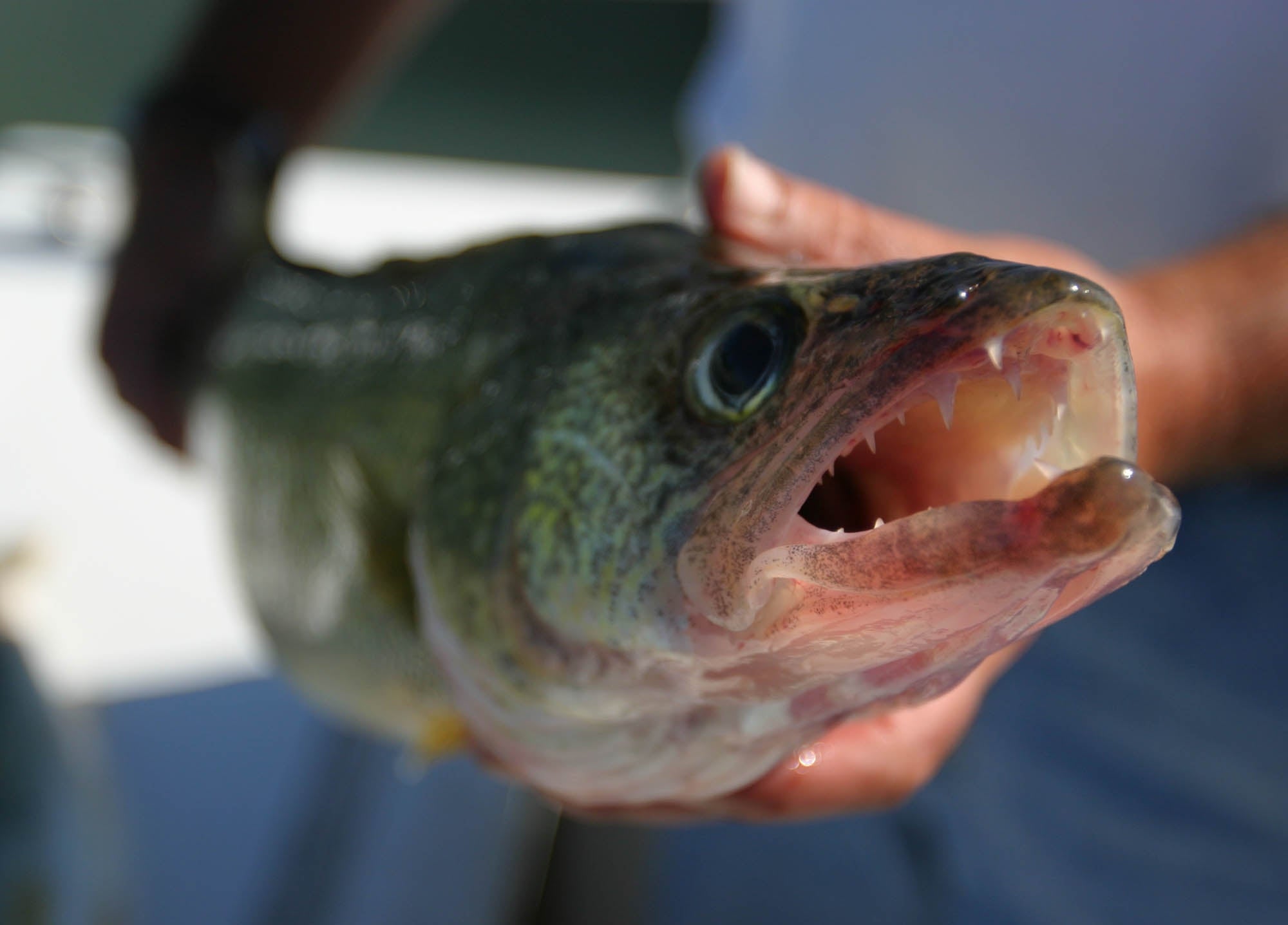Wisconsin is adopting its biggest change to walleye fishing regulations since the 1940s.
Starting April 1, the state’s bag limit for the prized game fish will fall from five to three walleye per angler. State wildlife authorities are reducing the limit as studies show the species is struggling to adapt to sporadic, warming winters due to climate change.
Zach Feiner is a research scientist at the state Department of Natural Resources and at the University of Wisconsin-Madison’s Center for Limnology. On WPR’s “The Morning Show,” Feiner said the state hopes lowering the number of fish caught can help walleye recover.
News with a little more humanity
WPR’s “Wisconsin Today” newsletter keeps you connected to the state you love without feeling overwhelmed. No paywall. No agenda. No corporate filter.
“When thinking about how to deal with climate change… well, let’s control the things we can control,” he said. “It’s hard to control the amount of carbon in your atmosphere if you’re at your lake. But when you’re fishing on your lake, you can control how many you keep, or you can manage the spawning habitat.”
Feiner called walleye one of the “best studied” fish in the state. A new research paper, which he co-authored, found the increasing unpredictability of Wisconsin’s winters and the warming climate are threatening the survival of young walleye in many Midwestern lakes.
On “The Morning Show,” Feiner talked about the walleye populations, future goals and how people can protect the fish.
The following was edited for brevity and clarity.
Kate Archer Kent: The Wisconsin State Climatology Office says this is likely to be the warmest winter ever recorded in Wisconsin. Why are walleye under stress?
Zach Feiner: Walleye spawn has been historically pretty tightly linked to when the ice melts off the lake, or ice-off. We think the reason for that is because they are spawning to time the hatching of their young to be around when there’s food availability. The ice-off triggers a series of events in lakes where you get algae and zooplankton production, which are these little tiny crustaceans that feed baby fish. The baby fish hatch and there’s zooplankton around to eat.
Because we’re getting more very extremely early and extremely late ice-off years, we think all of those events are becoming out of sync now. Now, these baby fish are hatching, and in a really early year like this one, they’re actually hatching in the missed time for their zooplankton food and then they don’t have enough food to survive and grow. That’s going to hurt the ability of these walleye populations to produce that next generation of fish.
KAK: Could walleye adapt to the changing climate with more time?
ZF: I think the short answer is maybe. The more complicated answer is that the climate is simply changing way too fast for walleye to be able to adapt.
One thing we found in this (new research) paper is that we looked at the long-term trends in ice-off timing and walleye spawning timing. When I say timing, I mean phenology — a study of the timing of seasonal events like flowers blooming, fish spawning, ice melting, leaves out of trees — that kind of thing. If you look at the long-term trends, ice-off is getting earlier, 3 ½ times faster than walleye spawning is.
Walleye spawning is not changing nearly as fast as ice off. Over time, they’re starting to fall behind the pace of climate change and the pace of our changing springs, which suggests that they don’t have that capacity to adapt at the speed to keep up with climate change. We’re just simply changing our springs too quickly for them to be able to keep track of it.
KAK: Along the lines of harvest management, how close is the population to the point that might justify prohibiting any walleye from being caught?
ZF: It depends across the landscape. There are some places where we’ve done that. The Minocqua Chain of Lakes in northern Wisconsin, for example, has been under a no walleye harvest management for quite a few years now, because they’re trying to rehabilitate that walleye population. In some places, yes, it can become so extreme that you actually close harvesting of walleye entirely, because you’re trying to keep those fish around and give them a chance to build their population numbers back up.
Some other lakes are very resilient to harvest, and they seem like they can take a lot of harvest. Part of the management then is finding those lakes that can do that versus lakes that can’t and adjusting your strategies accordingly. We track populations very closely in Wisconsin. We sample lakes on a rotation of about 50 to 60 lakes a year. There are 15,000 lakes, so you can’t cover them all. But we’re doing our best to try and understand which lakes are great and which lakes are having a hard time and adjusting accordingly.
KAK: Is there anything people can do to help protect walleye spawning?
ZF: Think about the things you can control. How do you use the land on the edge of your lakes to promote water quality or protect spawning habitat there? Follow harvest regulations. There are lots of things we can do to control the things we can control, to boost the resiliency of walleye to climate change and other things that are more difficult to control at a local level. Controlling invasive species is another one that people can do at the local level.
Wisconsin Public Radio, © Copyright 2025, Board of Regents of the University of Wisconsin System and Wisconsin Educational Communications Board.

